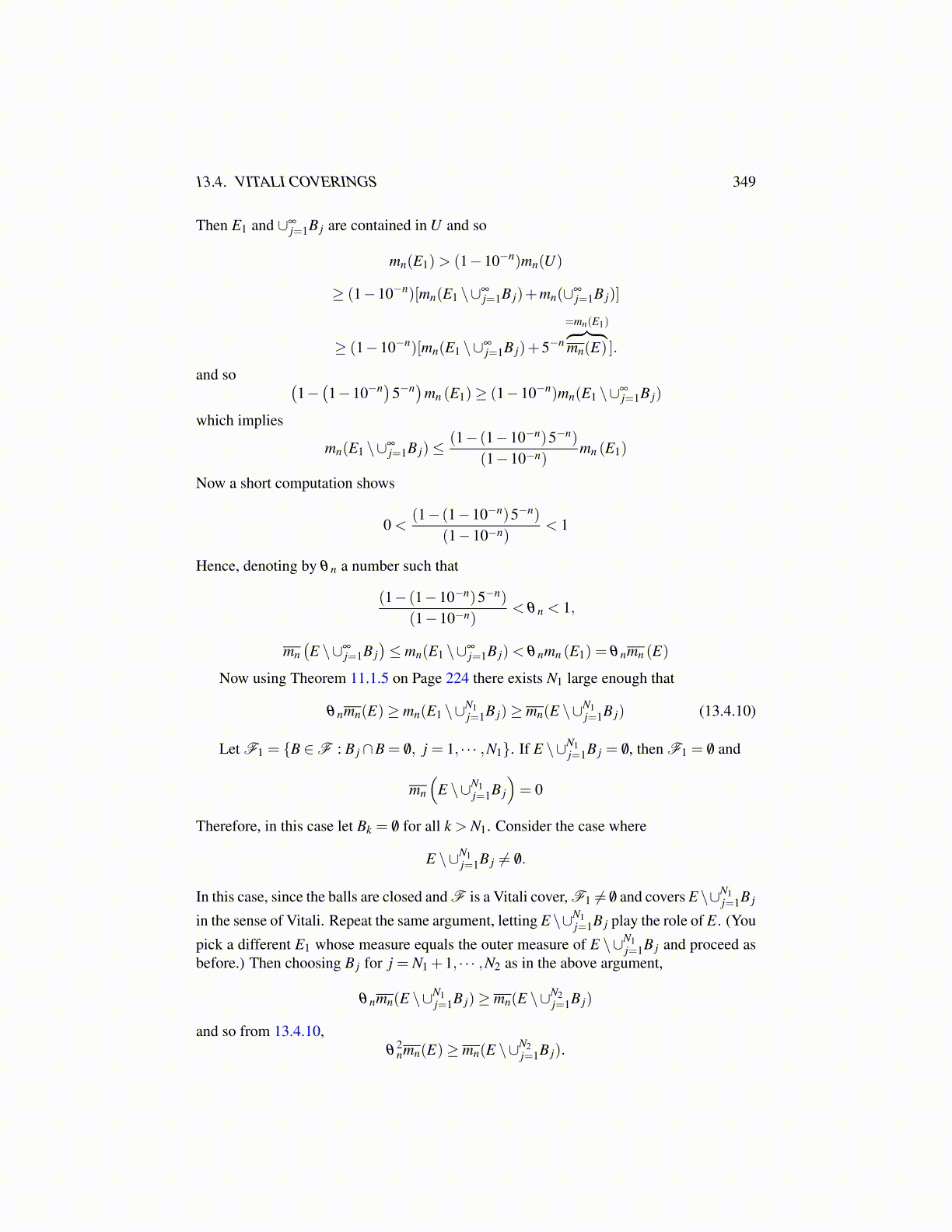
13.4. VITALI COVERINGS 349
Then E1 and ∪∞j=1B j are contained in U and so
mn(E1)> (1−10−n)mn(U)
≥ (1−10−n)[mn(E1 \∪∞j=1B j)+mn(∪∞
j=1B j)]
≥ (1−10−n)[mn(E1 \∪∞j=1B j)+5−n
=mn(E1)︷ ︸︸ ︷mn(E) ].
and so (1−(1−10−n)5−n)mn (E1)≥ (1−10−n)mn(E1 \∪∞
j=1B j)
which implies
mn(E1 \∪∞j=1B j)≤
(1− (1−10−n)5−n)
(1−10−n)mn (E1)
Now a short computation shows
0 <(1− (1−10−n)5−n)
(1−10−n)< 1
Hence, denoting by θ n a number such that
(1− (1−10−n)5−n)
(1−10−n)< θ n < 1,
mn(E \∪∞
j=1B j)≤ mn(E1 \∪∞
j=1B j)< θ nmn (E1) = θ nmn (E)
Now using Theorem 11.1.5 on Page 224 there exists N1 large enough that
θ nmn(E)≥ mn(E1 \∪N1j=1B j)≥ mn(E \∪N1
j=1B j) (13.4.10)
Let F1 = {B ∈F : B j ∩B = /0, j = 1, · · · ,N1}. If E \∪N1j=1B j = /0, then F1 = /0 and
mn
(E \∪N1
j=1B j
)= 0
Therefore, in this case let Bk = /0 for all k > N1. Consider the case where
E \∪N1j=1B j ̸= /0.
In this case, since the balls are closed and F is a Vitali cover, F1 ̸= /0 and covers E \∪N1j=1B j
in the sense of Vitali. Repeat the same argument, letting E \∪N1j=1B j play the role of E. (You
pick a different E1 whose measure equals the outer measure of E \∪N1j=1B j and proceed as
before.) Then choosing B j for j = N1 +1, · · · ,N2 as in the above argument,
θ nmn(E \∪N1j=1B j)≥ mn(E \∪N2
j=1B j)
and so from 13.4.10,θ
2nmn(E)≥ mn(E \∪N2
j=1B j).